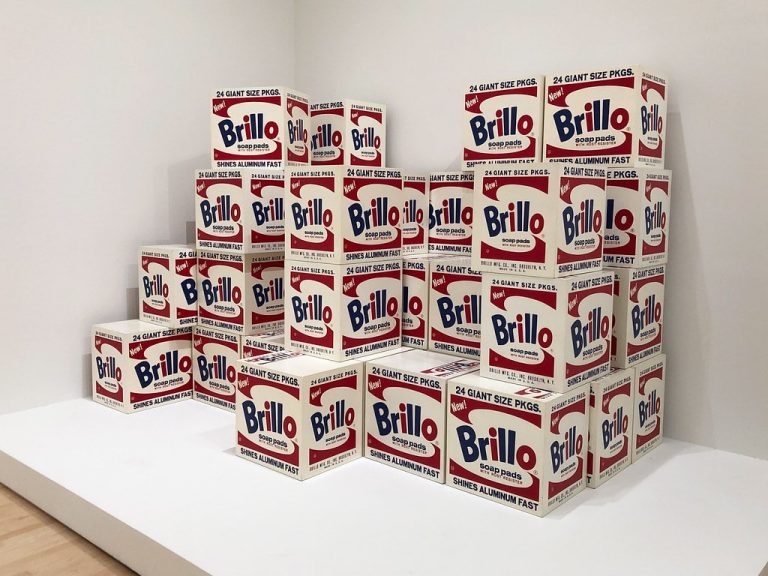Danto, a leading theorist in the philosophy of modern art, declared the end of art through Andy Warhol’s ‘ Brillo Box’. He argued that to be a work of art, an object must possess two elements: ‘what it is about’ and ‘what it embodies’, and introduced the concept of ‘art world’ to provide criteria for what is recognized as a work of art.
Arthur Danto, a leading theorist and critic of modern art philosophy, declared the end of art. He found the occasion to make this claim in Andy Warhol’s ”Brillo Box” exhibition at the Stable Gallery in Manhattan in 1964. Danto began to explore the nature of art by noting that Warhol’s ”Brillo Boxes” were perceptually indistinguishable from the Brillo boxes sold in supermarkets.
Through Warhol’s ”Brillo Box”, Danto explored why two identical or similar objects, one of which is an everyday object and the other is a work of art, and came to the conclusion that for an object to be a work of art, it must possess two essential elements: ‘aboutness’ and ’embodiment’. ‘Aboutness’ refers to the content or meaning, i.e. the subject matter intended by the artist, and ’embodiment’ refers to the representation of that subject matter in an appropriate medium or in an effective way. Thus, according to Danto, a work of art must have a subject matter to be interpreted.

Later, through his reflections on the history of art, Danto introduced the concept of ‘artworld’, arguing that Warhol’s ‘ Brillo Box’ would not have been granted the status of a work of art if it had appeared much earlier than 1964. By “artworld,” he refers to the system of knowledge, theories, and attitudes that drive the artistic situation at the time, which is necessary to identify an object as a work of art. The status of ‘ Brillo Box’ in 1964 as a work of art was possible because of the new belief system that even objects that look similar to everyday objects can be recognized as works of art.
Danto argued that the history of art should be understood as a history of narratives. Like history, art history has a narrative that selects the events it deems important from the myriad of artistic events and orders their associations. The so-called “narrative of the bazaar” that persisted from the Renaissance to Impressionism is a prime example. Bazari, whose theory of imitation was central to his work, saw accurate reproduction as the purpose and driving principle of art, bringing about a vivid visual experience, but this narrative was shaken to its roots by the advent of photography and film, and the cultural challenges of non-Western societies. Under these circumstances, artists of the time were forced to ask the questions of ‘what is art’ and ‘what should art do’, and as a result, art shifted from imitation to philosophical narrative. Under these circumstances, Danto, who sees art history as the history of the development of art in search of its own essence, found the end of art in Warhol’s ”Brillo Box”.
 I’m a blog writer. I want to write articles that touch people’s hearts. I love Coca-Cola, coffee, reading and traveling. I hope you find happiness through my writing.
I’m a blog writer. I want to write articles that touch people’s hearts. I love Coca-Cola, coffee, reading and traveling. I hope you find happiness through my writing.